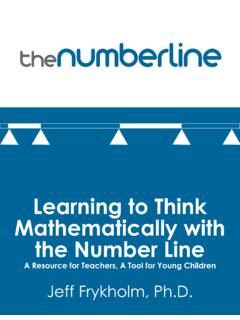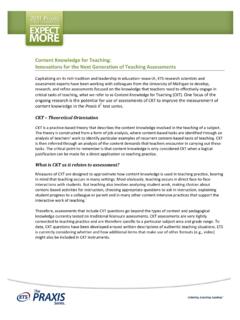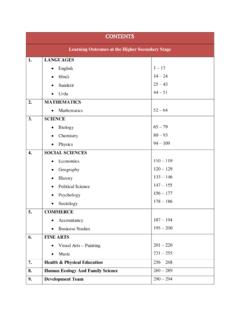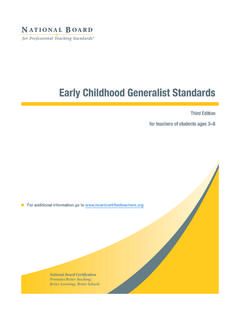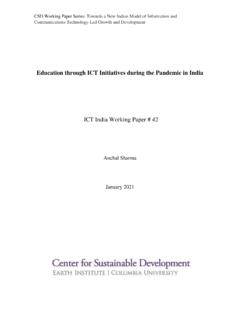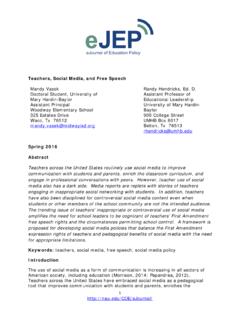Transcription of From Pedagogy to Andragogy
1 THE MODERN PRACTICE OF ADULT EDUCATION. From Pedagogy to Andragogy REVISED AND UPDATED. Malcolm S. Knowles CAMBRIDGE Adult Education Prentice Hall Regents, Englewood Cliffs, NJ 07632. 4. What Is Andragogy ? In the Beginning Was Pedagogy Until recently there was only one model of assumptions about learning and the characteristics of learners on which educators could base their curricula and teaching practices. It evolved in the monastic schools of Europe between the seventh and twelfth centuries and came to dominate secular schools when they were organized in the twelfth century and universities when they began emerging, first in Bologna and Paris, toward the close of the twelfth century.
2 This was the model of Pedagogy a term derived from the Greek words paid (meaning "child ) and agogus (meaning leading ). So " Pedagogy " means, literally, the art and science of teaching children. The pedagogical assumptions about learning and learners were, therefore, based initially on observations by the monks in teaching very young children relatively simple skills originally mostly reading and writing. With the spread of elementary schools throughout Europe and North America and much of the rest of the world, especially by missionaries in the eighteenth and nineteenth centuries this model was adopted and reinforced. And when educational psychologists started scientifically studying learning around the turn of the twentieth century they further contributed to the enthronement of the pedagogical model by limiting their research mostly to the reactions of children and animals to didactic teaching.
3 In fact, as we shall see later, we didn't get much knowledge about learning (in contrast to reactions to teaching) until studies on adult learning began to appear after World War II. When adult education began to be organized systematically during the 1920s, teachers of adults began experiencing several problems with the pedagogical model. One problem was that Pedagogy was premised on a conception of the purpose of education . namely, the transmittal of knowledge and skills that had stood the test of time that adult learners seemed to sense was insufficient. Accordingly, their teachers found them to be resistant frequently to the strategies that Pedagogy prescribed, including fact-laden lectures, assigned readings, drill, quizzes, rote memorizing, and examinations.
4 Adults appeared to want something more than this, and drop-out rates were high. Although the teachers were not aware of it, one of the great philosophers of this century, Alfred North Whitehead, was suggesting what was wrong. In an obscure footnote he pointed out that it was appropriate to define education as a process of transmittal of what is known only when the time-span of major cultural change was greater than the life-span of individuals. Under this condition, what people learn in their youth will remain valid and useful for the rest of their lives. But, Whitehead 40. What Is Andragogy ? 41. emphasized, We are living in the first period in human history for which this assumption is false.
5 Today this time-span is considerably shorter than that of human life, and accordingly our training must prepare individuals to face a novelty of conditions. 1 An attempt is made in Exhibit 3 to portray Whitehead's concept graphically. Exhibit 3 THE RELATIONSHIP OF THE TIME-SPAN OF SOCIAL CHANGE TO. INDIVIDUAL LIFE-SPAN. Note that up to the early part of the twentieth century the time-span of major cultural change ( , massive inputs of new knowledge, technological innovation, vocational displacement, population mobility, change in political and economic systems, etc.) extended over several generations, whereas in the twentieth century several cultural revolutions have already occurred and the pace is accelerating.
6 Under this new condition, knowledge gained at any point of time is largely obsolete within a matter of years; and skills that made people productive in their twenties become out-of- date in their thirties. So it is no longer functional to define education as a process of transmitting what is known; it must now be defined as a lifelong process of continuing inquiry. And so the most important learning of ail for both children and adults is learning how to learn, the skills of self- directed inquiry. Another problem the teachers of adults experienced with the pedagogical model was that many of the assumptions about the characteristics of learners did not seem to fit their adult students.
7 And so they began experimenting with different assumptions and found out that they often produced better results. Then Came Andragogy Between 1929 and 1948 the Journal of Adult Education, published by the American Association for Adult Education, carried articles by successful teachers of adults2 describing ways in which they were treating adults that deviated from the pedagogical model. Frequently the authors of these articles expressed a sense of guilt for violating academic standards (such as substituting interviews for quizzes). Obviously, they were feeling guilty because they had no theory to support their practices; they were simply being pragmatic and following their intuitions.
8 During the 1950s there began appearing books which analyzed these teachers' reports and extracted principles that were common to them my first book. Informal 1. Alfred , "Introduction," Wallace B. Donham, Business Adritt (New York: McGraw-Hill Book 1931). pp. viii-xix. 2. "Successful teachers of adults" is operationally defined as teachers who can retain their students;. note that this is not a criterion of success for teachers of children under compulsory attendance. 42 THE MODERN PRACTICE OF ADULT EDUCATION. Adult Education, published in 1950, was just such a listing of principles, but it made no attempt to envelop them in a unifying theory. Then, in the 1960s, we began getting findings from scientifically designed research that focused on the internal processes of adult learning.
9 The seminal study that launched this direction of movement was Cyril O. Houle's The Inquiring Mind, published by the University of Wisconsin Press in 1961. Houle found, through in-depth interviews with twenty-two "continuing learners, . that his subjects fell into three sub-groups: The first,.. the goal-oriented, are those who use education as a means of accomplishing fairly clear-cut objectives. The second, the activity-oriented, are those who take part because they find in the circumstances of the learning a meaning which has no necessary connection, and often no connection at ail, with the content or the announced purposes of the activity. The third, the learning-oriented, seek knowledge for its own sake.
10 These are not pure types; the best way to represent them pictorially would be by three circles which overlap their edges. But the central emphasis of each subgroup is clearly One of Houle's students, Allen Tough, extended this line of investigation from his position on the faculty of the Ontario Institute for Studies in Education later in the same decade. Tough's research question was, paraphrased: How do adults learn naturally when they are not being taught. His first findings, reported in two reports, Learning Without a Teacher (1967) and The Adult's Learning Projects (1971), showed that 1) almost all adults engage in from one to twenty major learning projects each year with the average number being around eight; 2) only about 10 percent of the learning projects were associated with educational institutions; 3) there is a fairly universal natural process of learning adults who undertake to learn something on their own go through a similar sequence of steps; 4) adults almost always tum to somebody for help at one or more points in this sequence.


